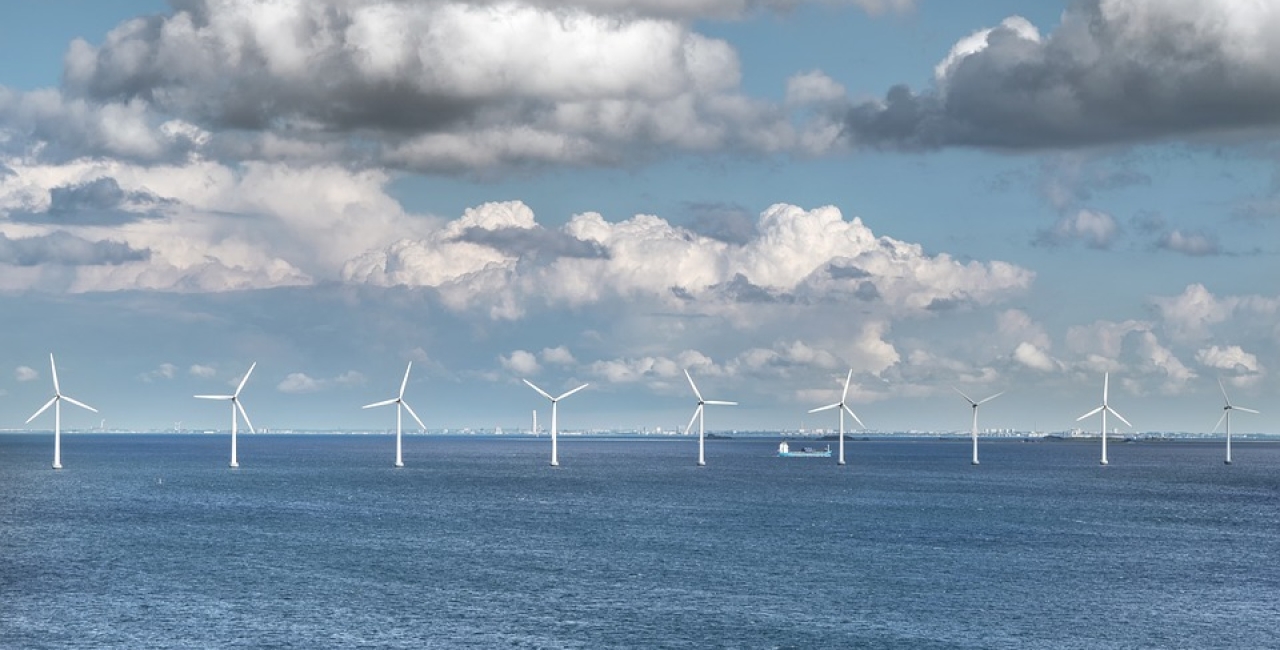Situated 12km from the island of Yeu, and 16km from the island of Noirmoutier, the Îles d’Yeu and Noirmoutier project marks the fifth offshore wind farm to be commissioned in France.
It will be home to 61 offshore wind turbines, with an individual capacity of 8MW. With an estimated annual production capacity of 1,900GWh, it will generate enough electricity for approximately 800,000 people per year.
A client of Mammoet for many years, BOW Terminal approached its engineers to assist with the marshaling, movement and temporary storage of the offshore wind turbines’ transition pieces (TPs), which were being fabricated in Belgium.
TPs are traditionally moved using crawler cranes, or with Self-Propelled Modular Transporters (SPMTs) fitted with a gantry system that requires assembly, and rigging to be connected at a height over 20m.
This project marked the first opportunity for Mammoet to showcase an innovation that makes TP handling safer and more efficient for the offshore wind energy sector.
It transforms SPMT trailers into giant forklifts – resulting in an offshore wind marshaling solution that is faster and more secure.
What is the innovation?
All 61 transition pieces were being shipped from Antwerp to BOW Terminal Vlissingen, the Netherlands. Each TP weighs 400 tonnes and measures 30 meters in height and 6 meters in diameter.
Arriving by barge in fours, the TPs were lifted onto the quayside by a 1,200t crawler crane and placed onto temporary concrete supports.
In the past, the SPMT trailers would be fitted with a gantry system that is constructed and parked over the top of the transition piece so it could be lifted from above.
In this instance, Mammoet utilized a new attachment for the SPMT that essentially turned it into a giant forklift, allowing the units to be picked up more quickly and easily from underneath.
The TPH800, as it's known, has a heavy lift capacity of 800 tonnes. It has two main cross beams that sit on top of two lines of SPMTs. From the cross beams hang two lower beams, which act like forklift forks.
As the SPMTs approach the TP, the front cross beam lifts like a parking barrier to allow the lower beams to be slotted underneath the transition piece. Once these are in position, the front beam lowers and the TP is firmly locked into place by pinning both cross beams to both lower beams.
For offloading and loading the TPs, it is possible with the TPH800 to offer a RoRo solution that avoids the use of cranes; however, this was not the approach taken for this project. De Haas explains the reasoning:
“The crane was used here because bigger barges were needed in case of a roll-off, and we had to allow for the tide. In Vlissingen, there is about four meters of tide. Using a crane, you are tide independent and can carry out work 24 hours a day if needed.”
Solid and flexible offshore wind marshaling solutions
While the TPH800’s strength comes from its ability to provide a system for lifting and moving transition pieces that is safer and more efficient than pre-existing methods, Mammoet’s flexibility also played a part in the success of the project.
With a single barge shuttling between Antwerp and Vlissingen, arriving in a sequence ranging from seven to ten days, Mammoet was able to be both flexible and responsive in mobilizing a crew for the two-day windows needed to offload and store the TPs. This resulted in a labor and cost-saving solution for the client.
Mammoet
Mammoet helps clients with Smarter, Safer and Stronger solutions to any heavy lifting or transport challenge. We aim to develop long term relationships in order to understand their businesses and challenges best, so we can realize the most efficient and cost-effective approaches. We have a unique global network and an unparalleled fleet of equipment. Through deep and longstanding engineering expertise and the highest quality and safety standards in execution we bring an intelligent and flexible approach to projects across a wide breadth of industry sectors. Clients trust us to help them achieve feats that were once considered impossible, and we have often broken records in doing so.

